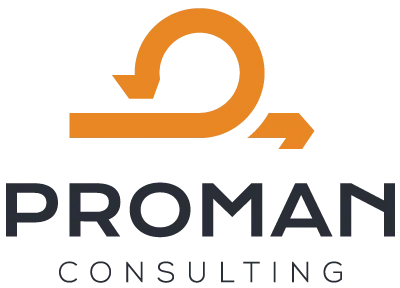Integrated project and project portfolio management maturity development with IT system implementation
Integrated project and project portfolio management maturity development with IT system implementation for a fast growing software development company
Industry: Software development
Objectives, executive summary
The aim of the project was to improve the organisation's project management (PM) and project portfolio management (PPM) maturity in order to enable the fast-growing company to manage its projects more effectively. During the project, we introduced a unified set of PM and PPM processes, roles and tools that enabled more transparent project management, better prioritisation and optimised allocation of organisational resources. By the end of the project, the organisation had established a functioning PMO (Project Management Office), systematic project and portfolio management processes, which together are able to address the challenges of growth. And in the final phase of the engagement, an IT support tool was implemented to manage all these deliverables in an integrated way.
Client background and environment
The client is a Hungarian subsidiary of a software development company that customizes and integrates the parent company's R&D solutions and products into its customers' systems. Due to the rapid growth of the company, more and more projects were running in parallel, but the lack of systematic project management and project portfolio management was an obstacle to efficient operation. The difficulty in delivering strategic projects internally required improvements to project and portfolio management processes to prepare the client for the challenges of growth and to successfully run future projects. The client specifically wanted to strengthen the traditional project management direction, so agile approaches were not part of the scope in this case.
Objectives, tasks
- Develop organisational project management knowledge and skills: Provide training and mentoring to project leaders and sponsors to ensure that they successfully apply the standardised processes in their daily work.
- Developing project and portfolio management processes: Developing consistent PM and PPM processes that allow for more transparent monitoring, planning, prioritisation and categorisation of projects.
- Developing a project culture: Establish a PMO function to ensure the long-term sustainability of project processes and develop a common language and approach across the organisation.
- Conceptualisation of IT support: Designing the implementation of an integrated PPM and PM tool adapted to the size of the organisational portfolio and the specificities of the project methodology.
Challenges, difficulties
- The project culture was not well established in the company, with different areas using different approaches and tools to manage their projects, which hindered the implementation of a consistent process. It was of course possible to build on some of these existing tools and practices, but it was clear that it was not possible to retain all the practices and tools that currently existed.
- The availability and availability of the designated stakeholders was low, which slowed down the progress of the project, and the priority and seasonal workloads on the client side often put the project on hold.
- Management was initially reluctant to implement a project management system because they were not clear about the immediate benefits.
- The selection of pilot projects was difficult as there was no comprehensive project list or portfolio.
- Project idea preparation skills and business analysis skills were lacking in the organisation, making project selection and portfolio building difficult.
- Annual strategy planning, budget planning and project portfolio planning were not coordinated, which increased the planning and coordination difficulties.
Implementation of the task
The project was divided into major phases, between which we worked iteratively on the deliverables to be delivered. The development processes required several iterations and iterations in close collaboration with the client. In order to prepare the organisation, we opted for a phased introduction of new functionality.
In the initial phase of the project we delivered a mindset-shaping training for key players in the organisation, introducing them to the basics of project management (PM) and project portfolio management (PPM). The aim of the training was to build a common language and familiarise participants with the theory, tools and techniques of modern project management that support them in effectively addressing the challenges of organisational growth. During the training, special emphasis was placed on PPM concepts, which included not only managing individual projects, but also reviewing and optimising the entire project portfolio.
After the training sessions workshops and interviews were organised to develop the details of the new PM and PPM processes. These sessions provided an opportunity to adapt the processes to the ideas of stakeholders and the needs of the organisation and management, and to develop systems that work well not only in theory but also in practice.
During the first joint sessions, we identified and defined the project actors and their responsibilities within the organisation. The new roles included the PMO (Project Management Office) and the Portfolio Committee (PPB).
- PMO: The role of this department was to help the organisation understand the project management process, support project managers and ensure that the established project processes were adhered to. The PMO was also responsible for monitoring the status of projects and preparing reports for management and PPB meetings.
- Portfolio Committee: The PPB's role was to review ongoing projects on a monthly basis, prioritise new project needs and make decisions on the project portfolio and funding.
In the next step we have identified organisational project categories based on their complexity. For each project category, separate PM and PPM processes were created, based on the same logical arc, but differing in their level of detail. These included the detailing of each step, the precise definition of roles and responsibilities, and the identification of the mandatory project documentation to be used. An important aim was to ensure that all categories, from small, simple projects to large, complex programmes, had clear, easy-to-follow guidelines. Managing by category ensured that projects received the right resources and attention, depending on their size and complexity. The content and format of project documentation was also developed in this context.
Subsequently, the our next focus was on developing a scoring methodology for project prioritisation. This system assessed projects based on their business value, fit with strategic objectives and resource requirements. The methodology allowed the organisation to prioritise projects appropriately based on available capacity and the strategic objectives of the organisation, and to ensure that the annual strategic planning and the project portfolio and project ideas were managed in an aligned way.
Once the processes and tools were in place, the PPB started to operate on a regular basis, holding monthly meetings to regularly review ongoing projects and new project proposals. The monthly meeting provided an opportunity to react in a timely manner to any problems that might arise and to add new projects to the portfolio if necessary.
At the same time as the PPB function became operational, we started testing the strengths and weaknesses of the established project processes with a number of selected pilot projects, and based on the feedback, the processes and related regulatory documentation were updated.
Subsequently, all new projects started operating under the established system, and we were tasked with supporting and monitoring the start-up of the system. We have launched a PM mentoring programme for project leaders, which provided a weekly opportunity for project leaders to come to us with their personal questions and challenges. In this process, project managers received ongoing support to solve PM problems they encountered in their daily work and to apply methodologies and tools effectively.
In the final phase of the project, after fine-tuning processes and starting operations, the need arose for a the introduction of a unified IT system, which can support project management and project portfolio management functions in an integrated way.
- Specification: We started specifying the requirements for the IT system based on the policies and processes we had previously developed. This included the functionality required to manage the project portfolio, track project categories and automate status reporting.
- Decision support analysis: We analysed the possible IT solutions and proposed the most suitable system, taking into account the organisation's specific needs, the ease of integration into the existing IT infrastructure and architecture, and its scalability and customisability.
- Implementation: Once the decision was made on the system of choice, we coordinated the implementation of the system, including testing, training of users and live deployment. The IT system enabled the organisation to fully manage the project portfolio, fully document projects and effectively track and report on projects and the project portfolio.
Results
During the project, the company managed to develop a unified and transparent project management system, which allows for efficient project management. The PMO and the Portfolio Committee continuously monitor the progress of projects, ensuring that resources are allocated appropriately and project priorities are in line with strategic objectives. The PM mentoring programme has contributed to the development of project managers' skills, while the implementation of the IT system will lead to further efficiency gains in project monitoring and portfolio management. The organisation has been provided with the tools and skills to effectively manage the project workload resulting from future growth.

 Designabc
Designabc